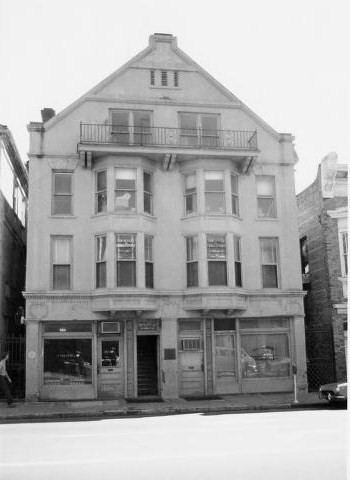NRHP Reference # 66000703 Designated NHLDCP October 9, 1960 Area 2,024 m² | Designated NHL December 21, 1965 Opened 1850 Added to NRHP 15 October 1966 | |
 | ||
Location 51 Broad St., Charleston, South Carolina Part of Charleston Historic District (#66000964) Address 51 Broad St, Charleston, SC 29401, USA Similar Dubose Heyward House, Edward Rutledge House, Robert Brewton House, Blake Tenements, Colonel John Stuart House | ||
The Clark Mills Studio is a historic building at 51 Broad Street in Charleston, South Carolina. Built as a tenement house, it was the residence and studio between 1837 and 1848 of sculptor Clark Mills (1810–83). Mills is credited with creating the first cast equestrian bronze staue, the 1852 statue of Andrew Jackson at Lafayette Square, Washington, D.C.. It was designated a National Historic Landmark in 1965, and now houses professional offices.
Description and history
The former Mills Studio building is located Charleston's old city, on the south side of Broad Street just west of Church Street. It is a four story masonry structure, built out of stuccoed brick. Its front facade is now commercial, with store fronts on the ground floor, projecting bay windows on the second and third floors. The interior is also reflective of its modern uses, having been converted into professional offices around the turn of the 20th century.
The building was originally built as a tenement house, and had two tenants in the 1830s, one of whom, Erastus Bulkeley, maintained a yard nearby from which he sold marble. When the other tenant moved out in 1837, Clark Mills rented that space, and established his residence and studio there. It is believed that it is here that the self-taught Mills produced his first significant work, a marble bust of South Carolina politician John C. Calhoun. In 1848 Mills was awarded the commission to produce a memorial statue to Andrew Jackson, to be located in Washington, D.C. His dynamic portrayal of Jackson, sitting astride a rearing horse, is remarkably balanced on the horse's two rear legs, and was the first American-cast full-size equestrian statue. Mills accomplished this by overweighting the rear of the horse to achieve the proper balance. He is best remembered more for his innovations in the engineering related to monumental sculpture than for the artistic merit of his output.
